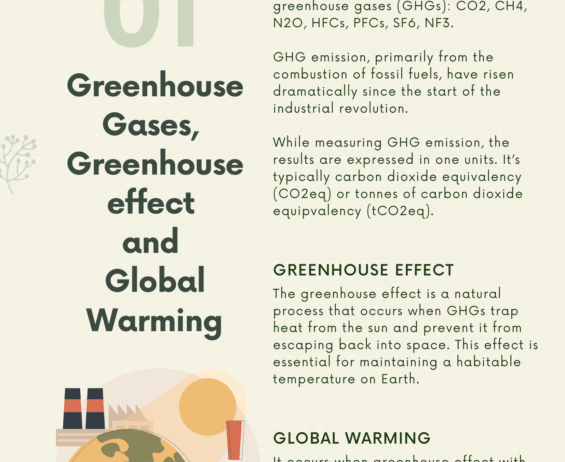Climate change continues to pose an existential threat to our planet, driven largely by human activity. Among the myriad factors contributing to this dilemma, carbon emissions stand out as a principal culprit. The concept of a carbon footprint encapsulates the total greenhouse gases emitted, directly or indirectly, as a result of human activity. Understanding how reducing individual and collective carbon footprints can influence global warming is crucial. It is essential to recognize that every small step counts in this collective effort.
The relationship between carbon footprints and global warming is rooted in the greenhouse effect. Greenhouse gases (GHGs), primarily carbon dioxide (CO2), trap heat in the Earth’s atmosphere. When carbon footprints are high, the accumulation of GHGs escalates, leading to an increase in global temperatures. By reducing carbon emissions, we can mitigate this effect, thereby addressing the pressing issues of climate change. The implications of carbon footprint reduction are profound; however, achieving substantial change necessitates individual commitment and collective action.
Now, let us delve into various approaches individuals can adopt to effectuate a reduction in their carbon footprints. Actions can range from minimalist lifestyle changes to systemic shifts in consumption patterns. Here are some key areas where small steps can significantly contribute to the larger goal of reducing carbon emissions.
1. Transportation: The transportation sector accounts for a significant portion of GHG emissions worldwide. Individuals can reduce their carbon footprints by opting for sustainable modes of transportation. Choosing public transportation, cycling, or walking whenever possible minimizes reliance on fossil fuels. Furthermore, carpooling with others reduces the number of vehicles on the road, thereby decreasing emissions collectively. For longer distances, opting for trains instead of flights can lead to substantial reductions in carbon footprints, as trains generally emit much less CO2 per passenger than airplanes.
2. Energy Consumption: Our homes are often a significant source of carbon emissions. The energy we utilize for heating, cooling, and electricity contributes to our carbon footprints. Simple measures can yield impactful results; for instance, switching to energy-efficient appliances can drastically reduce energy use. Installing smart thermostats, sealing windows, and using LED lighting are steps in the right direction. Additionally, sourcing energy from renewable providers or utilizing solar panels can further decrease reliance on fossil fuels, thus lowering emissions.
3. Diet: Our choices regarding food consumption have a remarkable impact on our carbon footprints. The meat and dairy industries are major contributors to GHG emissions. Reducing meat intake and opting for plant-based alternatives can yield a significant decrease in individual carbon footprints. Moreover, considering local and seasonal produce reduces the emissions associated with long-distance transportation. Supporting sustainable and organic farming practices can also be a formidable ally in this effort, as these methods often have a considerably lower carbon output.
4. Waste Management: The lifecycle of products contributes to carbon emissions, especially when considering production and disposal. Embracing a zero-waste philosophy can play a pivotal role in reducing carbon footprints. This includes practices such as recycling, composting, and reusing materials. Reducing single-use plastics and opting for sustainable packaging can effectively cut down on landfill waste, which is a significant source of methane emissions, a potent greenhouse gas. Each item saved from the trash contributes to a larger movement toward sustainability.
5. Water Usage: Interestingly, the water we consume has an indirect impact on our carbon footprints. The process of water purification and transportation is energy-intensive, and reducing water consumption can also reduce the associated carbon emissions. Simple practices such as fixing leaks, utilizing low-flow fixtures, and being mindful of water usage in daily routines can cumulatively contribute to a decline in carbon footprints. Furthermore, the energy required to heat water for showers, dishwashing, and laundry may also be curtailed through conscientious behaviors.
6. Consumer Choices: Every purchase contributes to a wider web of carbon emissions. Prioritizing sustainable, ethically-sourced products can lead to decreased footprints. This means supporting companies that employ eco-friendly practices and committing to buy less but of better quality. The circular economy is a pivotal model in mitigating carbon footprints, emphasizing reuse, recycling, and sustainability. Understanding the carbon footprint of everyday products encourages individuals to make informed choices that align with environmental stewardship.
7. Community Engagement: Collective action amplifies individual efforts. Engaging in community initiatives such as tree planting, clean-up drives, or educational workshops on sustainability can spread awareness and encourage others to adopt low-carbon lifestyles. Advocacy and education are vital in fostering a culture of environmental responsibility. Participating in forums or discussions surrounding climate policy can help influence change on a larger scale, creating a ripple effect that extends beyond individual actions.
Ultimately, the journey towards reducing one’s carbon footprint is both commendable and necessary. Each small step, though seemingly trivial, composes a larger movement towards a sustainable future. The collective impact of individual actions can eventually catalyze meaningful change, addressing the alarming realities of climate change and global warming. As we take strides toward climate justice and environmental sustainability, it becomes evident that small steps not only matter; they are integral to influencing global warming and fostering a healthier planet for future generations.







